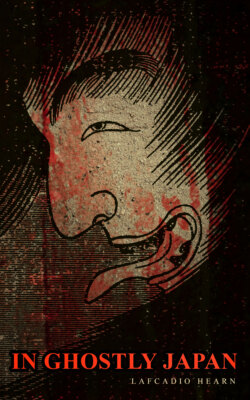Читать книгу In Ghostly Japan - Lafcadio Hearn - Страница 10
На сайте Литреса книга снята с продажи.
V
ОглавлениеAlthough the original signification of incense in Buddhist ceremonies was chiefly symbolical, there is good reason to suppose that various beliefs older than Buddhism,—some, perhaps, peculiar to the race; others probably of Chinese or Korean derivation,—began at an early period to influence the popular use of incense in Japan. Incense is still burned in the presence of a corpse with the idea that its fragrance shields both corpse and newly-parted soul from malevolent demons; and by the peasants it is often burned also to drive away goblins and the evil powers presiding over diseases. But formerly it was used to summon spirits as well as to banish them. Allusions to its employment in various weird rites may be found in some of the old dramas and romances. One particular sort of incense, imported from China, was said to have the power of calling up human spirits. This was the wizard-incense referred to in such ancient love-songs as the following:—
"I have heard of the magical incense that summons the souls of the absent:
Would I had some to burn, in the nights when I wait alone!"
There is an interesting mention of this incense in the Chinese book, Shang-hai-king. It was called Fwan-hwan-hiang (by Japanese pronunciation, Hangon-ko), or "Spirit-Recalling-Incense;" and it was made in Tso-Chau, or the District of the Ancestors, situated by the Eastern Sea. To summon the ghost of any dead person—or even that of a living person, according to some authorities,—it was only necessary to kindle some of the incense, and to pronounce certain words, while keeping the mind fixed upon the memory of that person. Then, in the smoke of the incense, the remembered face and form would appear.
In many old Japanese and Chinese books mention is made of a famous story about this incense,—a story of the Chinese Emperor Wu, of the Han dynasty. When the Emperor had lost his beautiful favorite, the Lady Li, he sorrowed so much that fears were entertained for his reason. But all efforts made to divert his mind from the thought of her proved unavailing. One day he ordered some Spirit-Recalling-Incense to be procured, that he might summon her from the dead. His counsellors prayed him to forego his purpose, declaring that the vision could only intensify his grief. But he gave no heed to their advice, and himself performed the rite,—kindling the incense, and keeping his mind fixed upon the memory of the Lady Li. Presently, within the thick blue smoke arising from the incense, the outline, of a feminine form became visible. It defined, took tints of life, slowly became luminous, and the Emperor recognized the form of his beloved At first the apparition was faint; but it soon became distinct as a living person, and seemed with each moment to grow more beautiful. The Emperor whispered to the vision, but received no answer. He called aloud, and the presence made no sign. Then unable to control himself, he approached the censer. But the instant that he touched the smoke, the phantom trembled and vanished.
Japanese artists are still occasionally inspired by the legends of the Hangon-ho. Only last year, in Tokyo, at an exhibition of new kakemono, I saw a picture of a young wife kneeling before an alcove wherein the smoke of the magical incense was shaping the shadow of the absent husband.6
Although the power of making visible the forms of the dead has been claimed for one sort of incense only, the burning of any kind of incense is supposed to summon viewless spirits in multitude. These come to devour the smoke. They are called Jiki- ko-ki, or "incense-eating goblins;" and they belong to the fourteenth of the thirty-six classes of Gaki (pretas) recognized by Japanese Buddhism. They are the ghosts of men who anciently, for the sake of gain, made or sold bad incense; and by the evil karma of that action they now find themselves in the state of hunger-suffering spirits, and compelled to seek their only food in the smoke of incense.
1. "Short (or Epitomized) History of Priests."
2. "The Praise of Pious Observances."
3. By sila is meant the observance of the rules of purity in act and thought. Dhyana (called by Japanese Buddhists Zenjo) is one of the higher forms of meditation.
4. Girls are still trained in the art of arranging flowers, and in the etiquette of the dainty, though somewhat tedious, cha-no-yu. Buddhist priests have long enjoyed a reputation as teachers of the latter. When the pupil has reached a certain degree of proficiency, she is given a diploma or certificate. The tea used in these ceremonies is a powdered tea of remarkable fragrance,— the best qualities of which fetch very high prices.
5. The places occupied by guests in a Japanese zashiki, or reception room are numbered from the alcove of the apartment. The place of the most honored is immediately before the alcove: this is the first seat, and the rest are numbered from it, usually to the left.
6. Among the curious Tokyo inventions of 1898 was a new variety of cigarettes called Hangon-so, or "Herb of Hangon,"—a name suggesting that their smoke operated like the spirit-summoning incense. As a matter of fact, the chemical action of the tobacco- smoke would define, upon a paper fitted into the mouth-piece of each cigarette, the photographic image of a dancing-girl.
